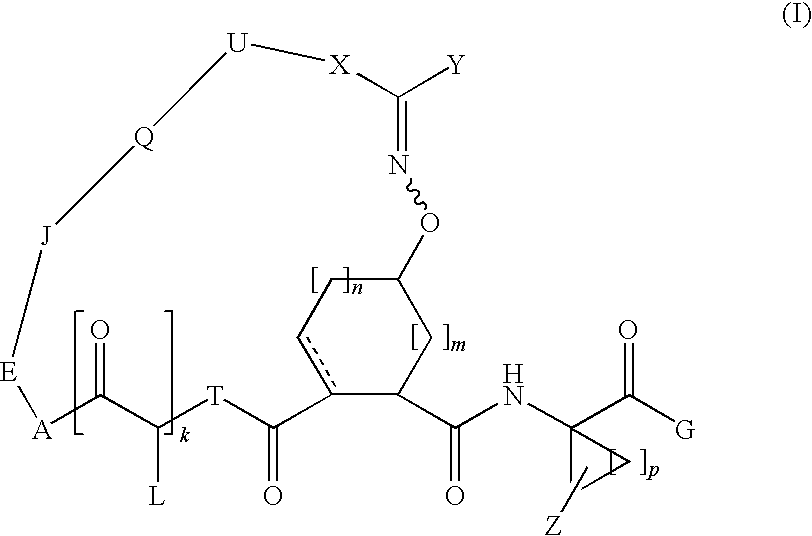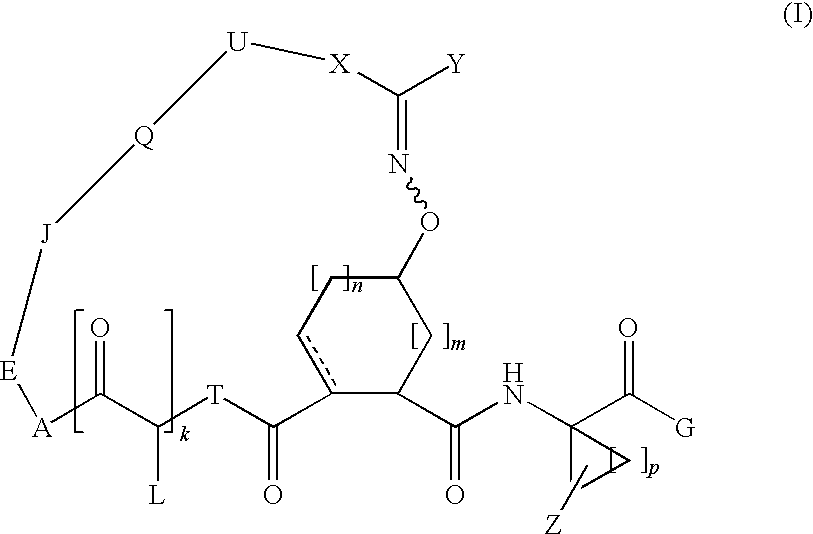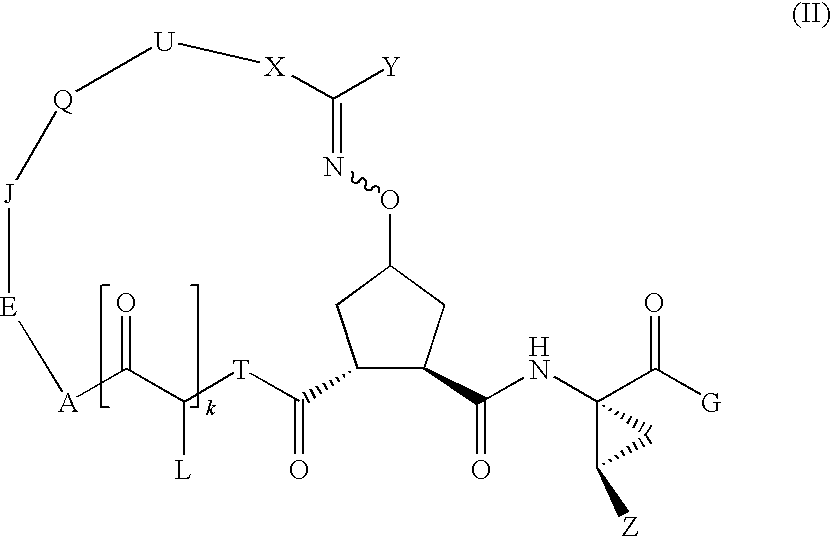Bridged carbocyclic oxime hepatitis c virus serine protease inhibitors
a hepatitis c virus and serine protease technology, applied in the field of bridged carbocyclic oxime hepatitis c virus serine protease inhibitors, can solve the problems of interferon related side effects, inability to reproduce infectious culture systems and small animal models for hcv, and increase public health problems, so as to inhibit serine protease activity
- Summary
- Abstract
- Description
- Claims
- Application Information
AI Technical Summary
Problems solved by technology
Method used
Image
Examples
examples
[0188]The compounds and processes of the present invention will be better understood in connection with the following examples, which are intended as an illustration only and not limiting of the scope of the invention. Various changes and modifications to the disclosed embodiments will be apparent to those skilled in the art and such changes and modifications including, without limitation, those relating to the chemical structures, substituents, derivatives, formulations and / or methods of the invention may be made without departing from the spirit of the invention and the scope of the appended claims.
Step 1A
[0189]To HATU (340 mg, 0.9 mmol) and 1b (110 mg, 1 mmol) in DMF (3 mL) in ice bath were added 1a (129 mg, 0.83 mmol) in DMF (3 mL) followed by DIEA (0.36 mL). After stirred for 40 min at 0° C., the mixture was allowed to warm to rt overnight. The mixture was diluted with EtOAc, which was washed with NaHCO3 (sat), brine, dried over Na2SO4, filtered and concentrated. The residue wa...
example 5
[0196]
[0197]To compound 1 (6 mg) in EtOH (1.5 mL) was charged Pd / C (3 mg). The mixture was stirred under H2 balloon for 12 h. Mixture filtered through celite, purified by reverse phase prep HPLC to give example 5.
[0198]MS (ESI): m / z=691.30 [M+H].
[0199]Example 6 to Example 36 are made following the similar procedures as Example 1-5 or following the general procedures described in the Synthetic Methods section.
[0200]The compounds of the present invention exhibit potent inhibitory properties against the HCV NS3 protease. The following examples describe assays in which the compounds of the present invention can be tested for anti-HCV effects.
example 37
NS3 / NS4a Protease Enzyme Assay
[0201]HCV protease activity and inhibition is assayed using an internally quenched fluorogenic substrate. A DABCYL and an EDANS group are attached to opposite ends of a short peptide. Quenching of the EDANS fluorescence by the DABCYL group is relieved upon proteolytic cleavage. Fluorescence is measured with a Molecular Devices Fluoromax (or equivalent) using an excitation wavelength of 355 nm and an emission wavelength of 485 nm.
[0202]The assay is run in Corning white half-area 96-well plates (VWR 29444-312 [Corning 3693]) with full-length NS3 HCV protease 1b tethered with NS4A cofactor (final enzyme concentration 1 to 15 nM). The assay buffer is complemented with 10 μM NS4A cofactor Pep 4A (Anaspec 25336 or in-house, MW 1424.8). RET SI (Ac-Asp-Glu-Asp(EDANS)-Glu-Glu-Abu-[COO]Ala-Ser-Lys-(DABCYL)-NH2, AnaSpec 22991, MW 1548.6) is used as the fluorogenic peptide substrate. The assay buffer contains 50 mM Hepes at pH 7.5, 30 mM NaCl and 10 mM BME. The enz...
PUM
| Property | Measurement | Unit |
|---|---|---|
| emission wavelength | aaaaa | aaaaa |
| excitation wavelength | aaaaa | aaaaa |
| non-covalent | aaaaa | aaaaa |
Abstract
Description
Claims
Application Information
 Login to view more
Login to view more - R&D Engineer
- R&D Manager
- IP Professional
- Industry Leading Data Capabilities
- Powerful AI technology
- Patent DNA Extraction
Browse by: Latest US Patents, China's latest patents, Technical Efficacy Thesaurus, Application Domain, Technology Topic.
© 2024 PatSnap. All rights reserved.Legal|Privacy policy|Modern Slavery Act Transparency Statement|Sitemap



